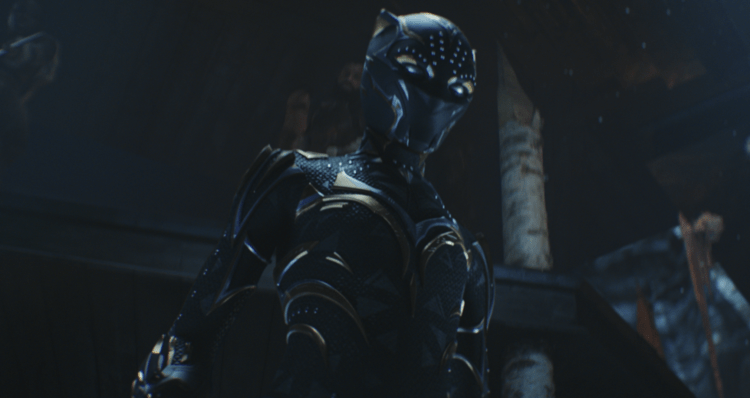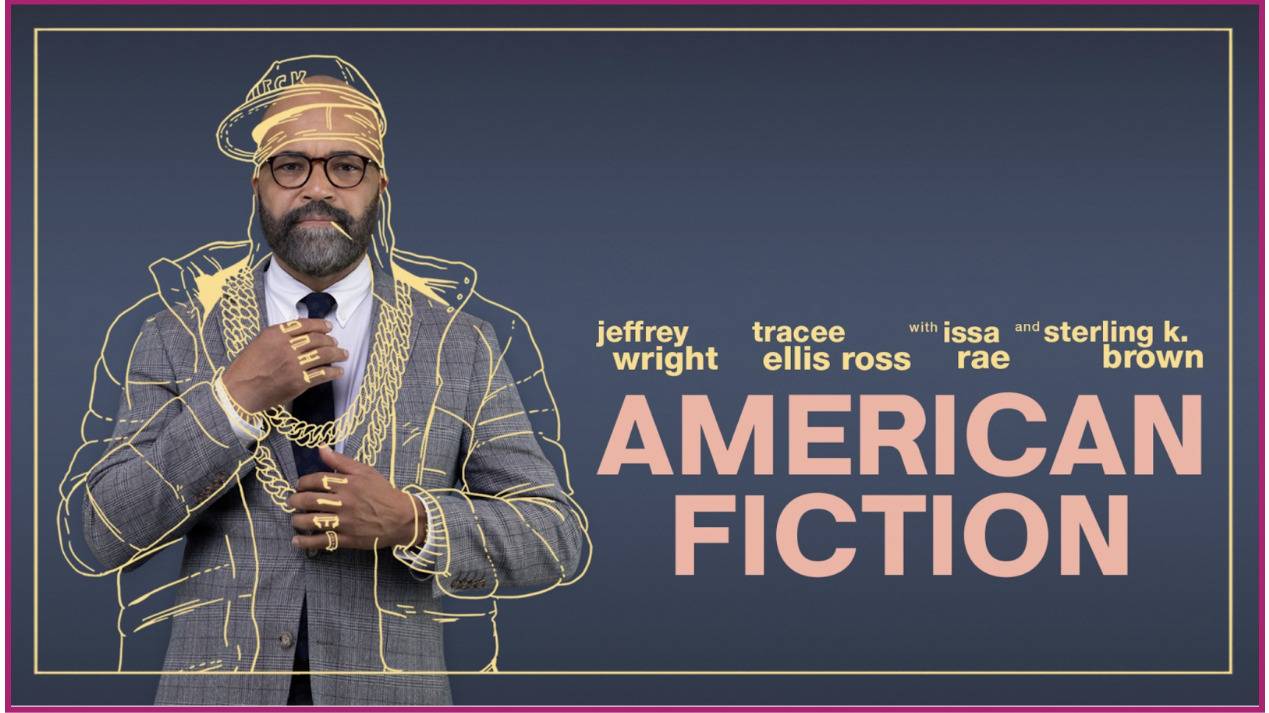I don’t quite know how to write this review, for several different reasons.
I teared up watching Chadwick Boseman deliver the 2018 commencement address for his alma mater, Howard University, even when he was still with us.
I had to do a crossword puzzle while watching “Ma Rainey’s Black Bottom” because seeing Boseman perform at his peak, a mere a month after his passing, made me too sad.
I could not read Ta-Nehisi Coates’ beautiful tribute to Boseman which was printed in every Marvel comic released in September 2020, until I was ready six months later.
I can’t be objective about “Black Panther: Wakanda Forever.”
I can’t feign detachment from the sequel to what I consider to be the MCU’s best, and possibly only genuinely great, film, “Black Panther.”
I can’t try to be rational about a film, whose trailer alone made me swell with emotion when it showed a mural of Boseman’s T’Challa in the capital of Wakanda.
I can’t pretend that knowing writer-director Ryan Coogler wrote the whole script for “Wakanda Forever” unaware of what his friend was going through doesn’t demolish me.
Several years ago, we lost one of our greatest living actors who completely altered the texture of the usually unflappable Marvel behemoth. He was just hitting his stride as one of the best there was, and inspired so many not just through who he was on the screen but the values he carried off it as well. Chadwick Boseman was a titan who left us too soon.
But the pictures keep rolling. Marvel couldn’t afford to ax “Black Panther: Wakanda Forever” which, as mentioned, was already in pre-production when Boseman passed. So Coogler and his team pivoted as best they could, not only for the money but to honor Boseman’s legacy. It’s an almost insurmountable task to try and celebrate the character many came to love for his regalness and kindness, while also acknowledging the individual, the real person, underneath all the CGI, who made that character possible.
So much of the first “Black Panther” was about mourning. It was about death, legacy, the people we leave behind, the people who have left us, and their everlasting, indelible presence that lives on. And it is deeply tragic that those themes reached out into the real world.
Rather than steer away from the difficulty of this task, Coogler veers directly into it. “Wakanda Forever” turns the spotlight to the first film’s expansive supporting cast, as they grapple with the loss of T’Challa. Coogler thankfully already built a rich set of characters in the first film in the series that have more depth than many of the MCU’s main characters.
These are characters like the fierce General Okoye, played by Danai Gurira; the royal Queen Ramonda, played by Angela Bassett; kind-hearted former spy Nakia, played by Lupita Nyong’o; the belligerent M’Baku, played by Winston Duke; and T’Challa’s sister, the sardonic scientist Shuri, played by Letitia Wright. Each woman (and M’Baku) brings the same vitality of the last movie to “Wakanda Forever” though this time with a much heavier energy.
After all, these characters are carrying the nation on their shoulders after T’Challa’s passing. And it’s onto them that we place our own grief for Boseman. We watch them fictionally grieve, knowing at the same time that their mourning is real. And importantly, it doesn’t feel tacky. It strikes as true. I was worried that Disney would do something gaudy like project a hologram of Boseman or deep-fake his appearance. Nothing of that kind happens. Instead, the film honors Boseman’s legacy with its bookended parts, without feeling like the work of fiction is leveraging on this tragedy or exploiting his memory.
The original “Black Panther” is the only MCU film that manages to transcend the facileness of the comic book movie and meaningfully engage with the actual world we live in. The conflict between T’Challa and Killmonger is so palpable because their respective stances on isolationism and intervention play out in the real world at a geopolitical scale. That’s what makes Killmonger one of the best modern film villains: He actually has a point. But his trauma makes him pursue his goals without scruples or care.
In “Wakanda Forever,” Coogler does it again, imbuing the film’s villain, Namor (played by Tenoch Huerta), with the fervent spirit of anti-colonialism. I’m biased because Namor is already one of my favorite existing characters in the comics. In the comics, his realpolitik as the regent of Atlantis makes him a character you hate to root for, whose national concerns extend beyond petty crime or bank robberies. Like with Killmonger, Coogler puts a new spin on Namor, taking him away from the Eurocentrism of Atlantis and into the aquatic kingdom of Talokan, explicitly making him a descendant of Mesoamerican people eradicated by Spanish colonizers. And just like Killmonger, Namor has a point.
The problem is that Namor has too much of a point, especially compared to the Wakandans. I spent most of the film actively rooting for Namor and his people, which wouldn’t be a problem if I was torn between both sides. But I wasn’t torn. I was firmly with Namor. Part of that is my own biases for the character and connecting more to the story Coogler crafted for him. But it’s also because the Wakandans’ stories, and particularly, Shuri’s, are spread a little thin.
Shuri’s arc throughout the film doesn’t land quite as solidly as it could because the film needs to do too much. It’s trying to reckon with the loss of T’Challa, the arrival of new threats, and a slew of new tragedies. It doesn’t have time to coax us gently into Shuri’s story seeking revenge; it gives us one line of dialogue and expects us to run with that. It’s made more difficult to invest in Shuri knowing that the actress playing her is reportedly an anti-vaxxer which disrupted part of the film’s shooting. Nor is it helped by the MCU bloat of it all. The worst parts of the film are the same things that have weighed down every other movie in Phase 4 of the MCU: poor CGI and an insatiable need for growth.
Some of the fight scenes are incredible, with inventive uses of Namor’s ankle-wings to make him fly like no other character has and a stunning showcase by the film’s art department which manages to one-up the already lustrous “Black Panther.” The props and costuming are fantastic, not just vibrant but also inventive. It’s a shame that they’re often put onto dreary or clearly unrealized backdrops. It’s certainly not as bad as the uncanny valley of “Thor: Love and Thunder,” but it’s still jarring to see a film with such sharp performances and writing be bogged down by its visuals.
The film’s inventiveness also disappears when it needs to connect itself to the wider MCU. Kevin Feige and his team are desperately trying to make us remember Valentina Allegra de Fontaine, sticking into her as many recent properties as they can. But like with her other appearances, she feels like an afterthought and like a waste of Julia Louis-Dreyfus, who appears to have been handed the script minutes before filming. All the scenes about the CIA feel like they were shot long after the film was finished, bridging very little to the rest of the story.
Thankfully, the same can’t be said of Riri Williams, a character who will be getting her own Disney+ show next year. Dominique Thorne is a delight as Williams, giving the film some levity now that Shuri is laden with grief. And unlike other Marvel expansionist projects, Riri is a vital part of the story of “Wakanda Forever” and actually belongs in the story, despite her American individualism making her stick out like a sore thumb in the more communal world of Wakanda.
Coogler was saddled with an impossible task. He was not just making a work for himself and his team to commemorate Boseman. He had to make a movie that would celebrate Boseman for millions of fans and still be a film that fits into the massive corporate machine of the MCU. And with the latter, the film’s success varies. The film’s ensemble are excellent, bearing the film’s heavy weight as elegantly as they can. Namor and Talokan are easily the best introductions to Phase 4 of the MCU, which has largely been stunningly mediocre or outright bad. But the need to integrate the film into that larger tapestry and Shuri’s saltatory arc hold the film back.
Nevertheless, the film is a stunning tribute to Chadwick Boseman. It manages to acknowledge the importance of the character, without having the real person who played him be lost in its shadow. Because no matter how much we love these movies, we have to remember that it’s really all about people. The actual people who make them, not the fictional ones we see on screen. It’s about Coogler’s grief, sending Boseman a script he’d never get to read. It’s about Angela Bassett, Letitia Wright, Danai Gurira, Winston Duke, and Lupita Nyong’o remembering their castmate who they won’t perform with again. And it’s about us, sitting in the cinema, seeing Boseman on the silver screen for one of the last times.
I started this review by telling you I don’t know how to write it. And now I’m telling you I don’t know how to end it. It feels final, like it’s saying goodbye to Boseman again. Unlike the characters of “Black Panther,” we do not have the heart-shaped herb to visit the spiritual plains of our dead. What we do have is Boseman’s work, both onscreen and off. And so perhaps, though he is no longer with us in this realm, his presence lives on: in his films, in his spirit, in the ways he inspired so many. In that way, maybe, he is forever.
“As you honor your past, press on with purpose.”
– Chadwick Boseman, 2018.






















